
- Exploring the Roman Heritage of Barcelona's Gothic Quarter
- Unveiling the Secrets of Barcelona's Gothic Quarter Architecture
- Historical Significance of the Roman Roots in Barcelona's Gothic Quarter
- Must-Visit Landmarks in Barcelona's Gothic Quarter with Roman Influence
- Cultural Insights: The Intersection of Gothic and Roman History in Barcelona
- A Walk Through Time: Discovering Roman Remnants in Barcelona's Gothic Quarter
Barcelona's Gothic Quarter, with its labyrinthine streets and medieval charm, is a testament to the city's rich historical tapestry. This enchanting area not only showcases stunning Gothic architecture but also harbors remnants of its Roman past, inviting visitors to explore layers of history that date back over two millennia.
Deep within the heart of Barcelona's Gothic Quarter: Roman Roots lies the ancient Roman city of Barcino, whose foundations still influence the city's layout today. As you wander through its narrow alleys, you'll discover archaeological treasures that reveal the vibrant life of this once-thriving Roman settlement.
Exploring the Roman Heritage of Barcelona's Gothic Quarter
Exploring the Roman heritage of Barcelona's Gothic Quarter reveals a fascinating story woven into the very fabric of the city. The remnants of Barcino, the Roman settlement that predates the Gothic structures, can still be seen in various locations. Key sites include:
- **The Roman Walls**: Portions of the ancient walls still stand, showcasing impressive defensive architecture.
- **The Temple of Augustus**: The remains of this temple reflect the religious heart of ancient Barcino.
- **The Plaça del Rei**: This square sits atop the ruins of Roman buildings, hinting at the area's historical significance.
Walking through the Gothic Quarter, one can notice how the Roman roots have influenced the urban landscape. The grid-like street pattern is a direct result of Roman city planning, allowing for efficient movement and trade. Additionally, remnants of ancient structures can be found integrated into later Gothic constructions, creating a unique architectural dialogue.
Many visitors are drawn to the archaeological sites scattered throughout the area, where excavations continue to unveil artifacts from the Roman era. Noteworthy finds include:
- **Ceramic fragments**: Offering insights into daily life and trade.
- **Coins**: Reflecting the economic activities of ancient Barcino.
- **Mosaics**: Displaying the artistic expressions of the time.
The juxtaposition of Roman and Gothic elements creates a captivating atmosphere in the Gothic Quarter. This blend not only enriches the historical narrative but also enhances the cultural experience for visitors, allowing them to connect with Barcelona's diverse heritage in a truly immersive way.
Unveiling the Secrets of Barcelona's Gothic Quarter Architecture
The architecture of Barcelona's Gothic Quarter is a captivating tapestry that blends various historical influences. At its core are the remnants of Roman architecture, which set the stage for the later Gothic developments. Key features of this architectural fusion include:
- Arched Doorways: Many Gothic buildings incorporate Roman arches, adding grandeur to the structures.
- Stone Masonry: The traditional techniques used in Roman structures can be seen in the intricate stonework of Gothic facades.
- Column Designs: Columns from both periods exhibit unique styles, showcasing the evolution of architectural aesthetics.
As you explore, notice how the Gothic style not only adapted but also transformed Roman elements. This architectural dialogue is evident in the way towers rise above ancient foundations, symbolizing a connection between the past and present. The blend of these styles invites appreciation for the craftsmanship that characterized different eras.
Many buildings in the Gothic Quarter, such as the Barcelona Cathedral, stand as monumental examples of this architectural interplay. The cathedral's structure integrates older Roman materials, demonstrating how the city's history is layered and complex. Each stone tells a story, linking the serene beauty of Gothic design with the robustness of Roman engineering.
In summary, the architecture of Barcelona's Gothic Quarter offers a window into its rich past. Visitors can experience the seamless transition from the Roman roots to Gothic splendor, highlighting the city's evolution over centuries. This unique architectural heritage not only defines the quarter but also enriches the cultural identity of Barcelona itself.
Historical Significance of the Roman Roots in Barcelona's Gothic Quarter
The historical significance of the Roman roots in Barcelona's Gothic Quarter is profound, as it lays the groundwork for the city's identity. Barcino, the Roman city, was strategically established at the crossroads of trade routes, leading to a flourishing economy. This strategic positioning allowed for:
- Development of Infrastructure: The creation of roads and aqueducts that enhanced connectivity.
- Urban Planning: The grid layout established by the Romans still influences the streets today.
- Cultural Exchange: Interaction with other civilizations that enriched local traditions.
Moreover, remnants of Roman architecture are not just historical artifacts; they serve as foundational elements for later Gothic constructions. The incorporation of these elements into new buildings illustrates the continuity of architectural practices and the respect for heritage. Some key features derived from Roman roots include:
- Columns and Pillars: Often recycled into Gothic structures, showcasing craftsmanship.
- Building Materials: Many Gothic edifices used stones sourced from Roman ruins.
- Architectural Styles: The transition from Roman to Gothic highlights evolving aesthetics.
The physical presence of the Roman walls and other archaeological sites within the Gothic Quarter serves as a vivid reminder of the city's ancient past. These structures provide insights into the daily lives of its inhabitants, allowing modern-day visitors to connect with the remnants of a vibrant culture. Noteworthy sites include:
- Roman Fora: Areas where public life thrived, indicating the importance of civic engagement.
- Bathhouses: Reflecting the social customs and hygiene practices of the era.
- Markets: Sites of economic activity where goods were traded and cultural interactions occurred.
In essence, the historical significance of Barcelona's Roman roots is woven into the very fabric of the Gothic Quarter, offering a rich narrative that enhances the visitor experience. This intertwining of histories not only preserves the legacy of Barcino but also enriches the cultural tapestry of modern Barcelona.
Must-Visit Landmarks in Barcelona's Gothic Quarter with Roman Influence
One of the most significant landmarks in Barcelona's Gothic Quarter is The Roman Walls, which date back to the 3rd century. These ancient fortifications not only served as a defense for Barcino but also showcase the impressive engineering skills of the Romans. Visitors can walk along the preserved sections, gaining insight into the city's historical significance and its early urban planning.
Another must-visit site is the Temple of Augustus, hidden away in a quiet courtyard. The remains of this temple, dedicated to the Roman Emperor, highlight the religious life of ancient Barcino. The towering columns are a testament to the architectural prowess of the time, offering a striking contrast against the surrounding medieval buildings.
The Plaça del Rei stands as a focal point of historical intrigue, built over the ruins of Roman structures. This square not only served as a political center during the Middle Ages but also continues to echo the legacy of Barcino. It's an ideal spot for visitors to reflect on the rich history that shaped Barcelona's identity.
Lastly, don’t miss the Crypt of Santa Eulàlia, located beneath the Barcelona Cathedral. This site showcases the layered history of the Gothic Quarter, where Roman remains intermingle with Gothic design. As you explore, you'll uncover the stories that link the past to the present, making it a perfect concluding stop on your journey through this fascinating part of the city.
Cultural Insights: The Intersection of Gothic and Roman History in Barcelona
The cultural insights found at the intersection of Gothic and Roman history in Barcelona's Gothic Quarter offer a unique perspective on the city's evolution. The Gothic architecture, characterized by its intricate details and soaring structures, often incorporates elements from the Roman period. This fusion not only showcases the city’s resilience through centuries but also highlights how different architectural styles can coexist harmoniously, enriching the urban landscape.
One of the most fascinating aspects of this intersection is the use of Roman materials in Gothic buildings. For instance, many Gothic structures repurposed stones from Roman ruins, blending the old with the new. This practice reflects a deep respect for heritage and illustrates the continuity of craftsmanship. Key examples include:
- The Barcelona Cathedral: Integrates Roman stones, symbolizing the layers of history within.
- Plaça del Rei: Built over Roman foundations, it serves as a historical nexus.
- Various Gothic Churches: Many showcase Roman architectural features, such as columns and arches.
As visitors stroll through the narrow streets of the Gothic Quarter, they encounter a tangible dialogue between these two historical periods. The design of the quarter, with its maze-like layout, is a direct descendant of Roman urban planning, while the artistic expressions found in Gothic facades reflect the cultural advancements of the medieval era. This interplay invites a deeper understanding of Barcelona's multifaceted identity.
Ultimately, the convergence of Roman and Gothic influences in Barcelona’s Gothic Quarter not only enhances its aesthetic appeal but also provides a continuous narrative of cultural transformation. Each structure and street corner tells a story of resilience, adaptation, and the rich tapestry of life that has flourished in this remarkable city for centuries.
A Walk Through Time: Discovering Roman Remnants in Barcelona's Gothic Quarter
As you embark on a journey through time in Barcelona's Gothic Quarter, the echoes of Roman history resonate in every corner. Walking along the ancient streets, visitors can often spot remains of the Roman city of Barcino, providing a tangible connection to the past. Here, the remnants tell a story not just of buildings, but of daily life, commerce, and the vibrant culture that once thrived in this area. Key sites that highlight this Roman legacy include:
- The Roman Walls: Standing strong, these walls reveal the defensive strategies of the ancient city.
- The Temple of Augustus: A glimpse into the spiritual life, showcasing the reverence for Roman deities.
- El Call: The old Jewish quarter, which integrates Roman foundations into its historic maze.
The architectural landscape of the Gothic Quarter presents a fascinating blend of styles, where Gothic structures rise from the solid bases of Roman foundations. This unique fusion is not merely aesthetic; it represents centuries of adaptation and resilience. Structures like the Barcelona Cathedral illustrate how Gothic architects embraced Roman elements, using materials and techniques that echoed their predecessors. The intricate designs and towering heights of Gothic buildings serve as a testament to the evolution of architectural thought across eras.
During your walk, take a moment to appreciate the archaeological remnants that pepper the quarter. Archaeological excavations reveal a wealth of artifacts, allowing modern visitors to piece together the daily lives of the ancient inhabitants. Significant findings include:
- Pottery fragments: These offer insights into culinary practices and trade.
- Coins: Providing evidence of economic activity within Barcino.
- Mosaics: Artistic expressions that showcase craftsmanship and design sensibilities of the time.
Ultimately, a stroll through Barcelona's Gothic Quarter is a walk through history, where Roman and Gothic influences converge seamlessly. This rich tapestry not only enhances the atmosphere of the area but also offers deep insights into the city's development over the centuries. Each step taken along these storied streets unveils layers of cultural heritage that continue to shape the identity of modern Barcelona.
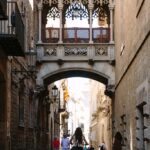 Navigating Barcelona's Gothic Quarter
Navigating Barcelona's Gothic Quarter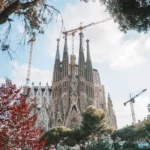 All You Need to Know About Sagrada Familia in Barcelona: Essential Information
All You Need to Know About Sagrada Familia in Barcelona: Essential Information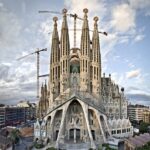 Fascinating Facts About Sagrada Familia in Barcelona, Spain
Fascinating Facts About Sagrada Familia in Barcelona, Spain The Gothic Quarter: Former Jewish Neighborhood
The Gothic Quarter: Former Jewish Neighborhood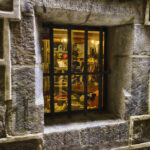 Discover unique boutiques and artisan shops in the Gothic Quarter
Discover unique boutiques and artisan shops in the Gothic QuarterIf you want to know other articles similar to Barcelona's Gothic Quarter: Roman Roots you can visit the category WHERE YOU CAN GO.
Deja una respuesta

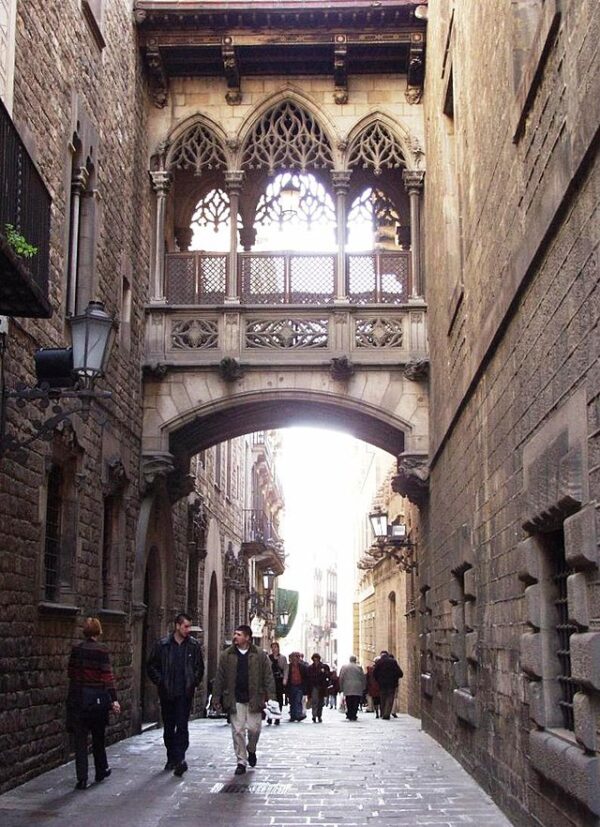








Read more!